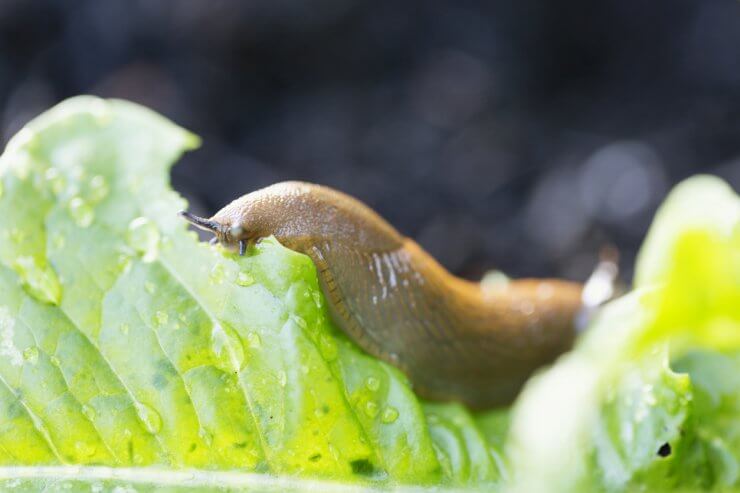
How could something so helpless like a slug cause so much damage in your garden? You might not always know you have a slug problem right away because slugs only come around at night and when it’s cloudy and rainy. But you’ll definitely notice their damage. You’ll see holes and jagged edges on your vegetable leaves and stems. You can tell if the slug damage is fresh by how rough the edges of the holes or bite marks look. If they are more rounded, that shows that your vegetables have begun to heal themselves and it is probably older slug damage. There are ways to make your own slug repellent and slug deterrents using homemade or natural resources instead of chemicals and poison. Here are some simple yet effective ways to keep slugs out of your vegetable garden.
Discover 7 top tips for growing, harvesting, and enjoying tomatoes from your home garden—when you access the FREE guide The Best Way to Grow Tomatoes, right now!
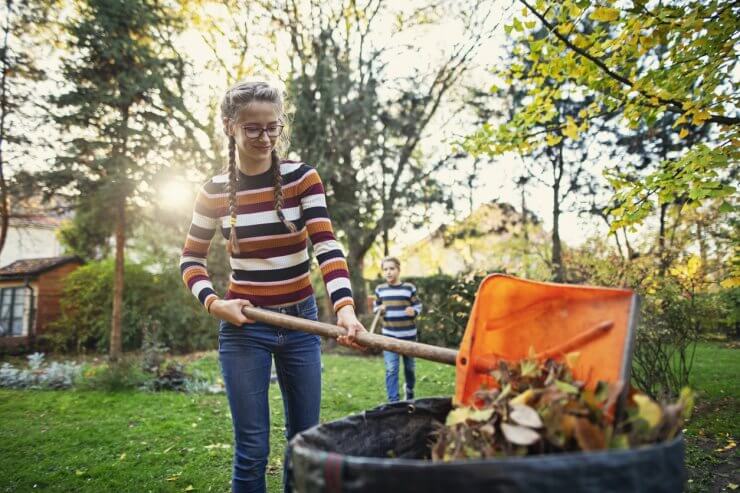
Clean up
Slugs love to hide out in dark, damp areas in a garden so take some time and reduce the hiding places by getting rid of or moving old leaf piles. Keep your compost pile away from the garden if you can. Compost is garden gold but can be a hotbed for slug activity.
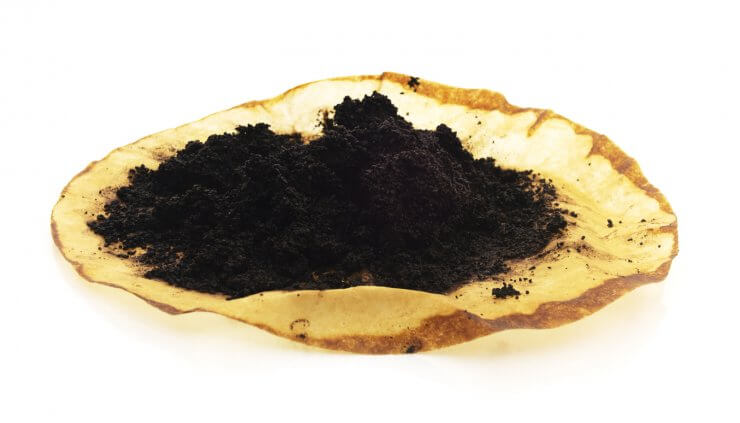
Coffee grounds
If you’re a coffee drinker, an easy slug repellent is old coffee grounds. Slugs don’t like the feeling of moving over them. Be careful though, because coffee grounds can add acidity to the soil, so only use in alkaline soils to balance out pH or for acidity-loving plants like blueberries and parsley.

Beer traps
Hey slugs, it’s last call! Bury a shallow container (think: small mason jar, storage container, or margarine tub) so the lip is just at soil level. Pour some beer into the container. The slugs are attracted to the sweet yeasty aroma and by the time they come exploring they’ve sunk to the bottom of the trap. Don’t use good beer for this, drink that and use the cheap stuff for beer traps!
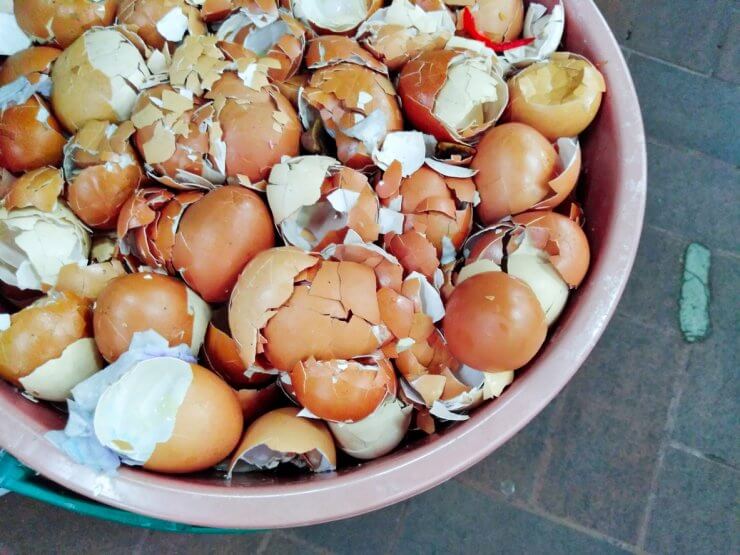
Broken eggshells
This slug repellent has been debated with folks arguing over whether it’s truly effective or not. But for the simplicity and affordability, it’s worth a shot. The theory is that slugs don’t like to travel across the jagged edges of broken eggshells. To protect your garden veggies, you can sprinkle some broken eggshells around their perimeter.
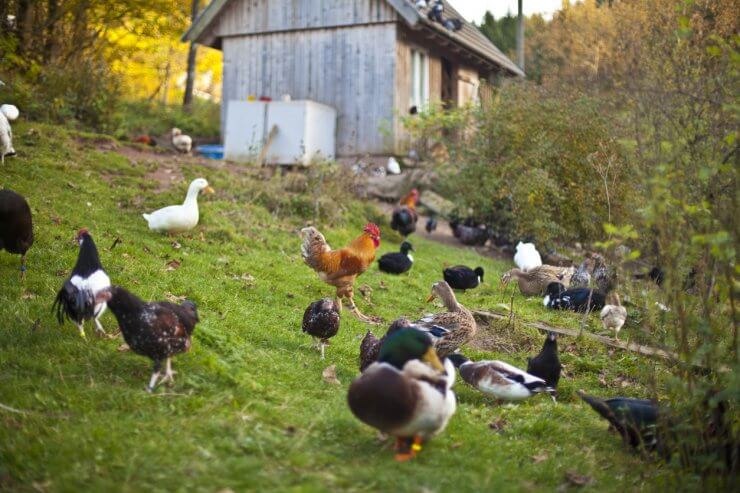
Chickens and ducks
Do you need yet another reason to convince your partner to build that chicken coop? Well, chickens and ducks are natural predators to slugs and do a great job at keeping the slug population in check. Birds, in general, are a great slug repellent since they well, eat the slugs. (Okay, I never said it was going to end well for the slugs, just that we weren’t using chemicals!)
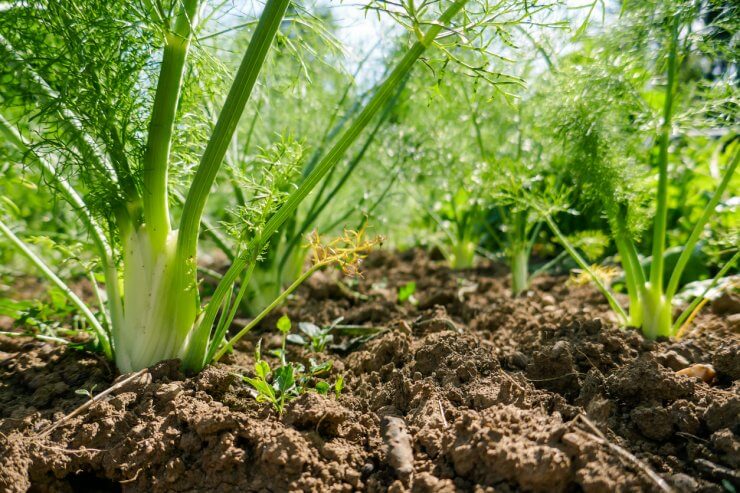
Plant fennel and rosemary
There are many herbs and vegetables you can plant in your garden that can help control pests and bugs. Fennel and rosemary make a great natural slug repellent. Fennel’s licorice scented leaves and stems seem to keep slugs at bay while rosemary secretes an aromatic sap-like tar that slugs want nothing to do with.
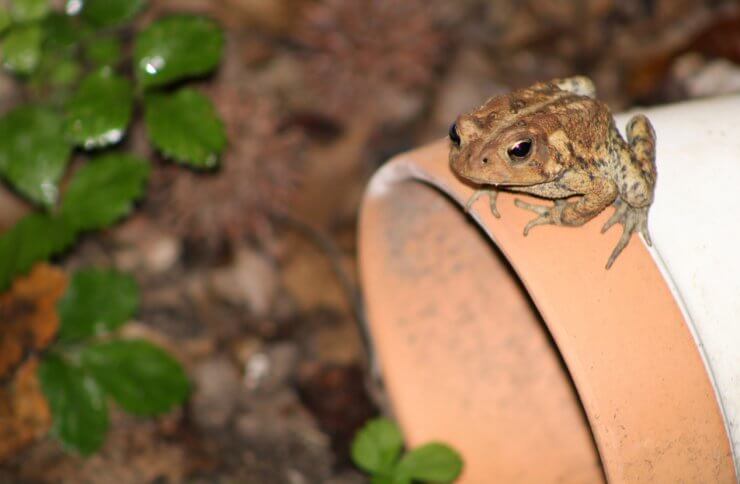
Make a home for slug eating wildlife
Frogs and toads are great slug hunters so let’s make them feel at home! An easy way to make a toad hut is to bury a clay pot sideways in the ground so that half of the pot is underground. It’ll look like a little clay igloo or cave and is perfect for attracting toads and frogs who will take care of your slug problem. Plastic containers work well too, but you’ll want to make sure it’s weighted with rocks so a stormy day doesn’t carry it away. As mentioned earlier, birds are another natural enemy to slugs. Anything you can do to encourage their presence, bird boxes/houses, and bird feeders will indirectly help control your slug population.
Do you have experience dealing with slugs? What’s your slug saga? Tell us what slug repellent works best in your garden in the comments!
Discover 7 top tips for growing, harvesting, and enjoying tomatoes from your home garden—when you access the FREE guide The Best Way to Grow Tomatoes, right now!





salt – and sprinkle on them (they die)
All are acceptable except the beer – this is barbaric and downright cruel! They have as much right to life as we do.
I sprinkle Epsom salts around my plants. Gives the soil some magnesium and keeps the slugs at bay. You can see the slime trail as it moves away from your plants.
The dried, spiny balls that accumulate under sweet gum trees were used as mulch around our hostas, and effectively eliminated our problems with slugs.
I have read that you can sprinkle rolled oats, apparently slugs love them.
They eat the oats and then dry out.
Haven’t tried it yet, because we also have a rat problem here, and I don’t want to attract more of those with the oats.
These sound really useful
🙂
I’ve had great success with egg shells. But one girl can only eat so many eggs. I make a 1” wide continuous circle around each plant. So I plant in boxes and inside the rim attach a 1” wide continuous strip of sanding paper . As the plants grow keep leaves away from the edge where they can form a bridge for the slugs.
Great tip!